12 Must-See Places in Las Vegas for Architecture and Design Lovers
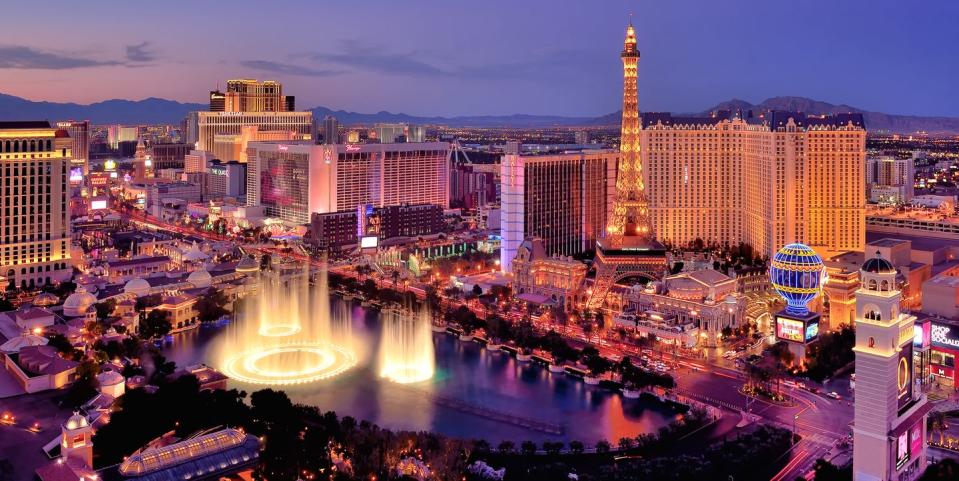
Las Vegas may be known for attractions other than architecture (wink), but Sin City is so much more than nightclubs and casinos. Within just a mile of the world-famous Las Vegas Strip, a.k.a. Las Vegas Boulevard, architecture and design lovers can stroll among soaring creations from the minds of architects Cesar Pelli and Daniel Libeskind, dine in restaurants designed by Ken Fulk and Martin Brudnizki and stay in a lavish suite imagined by French architect Jacques Garcia. Here are 12 of the most beautifully designed sites to explore in Las Vegas.
The Most Iconic Architecture and Design in Las Vegas
Welcome to Las Vegas Sign: Betty Willis
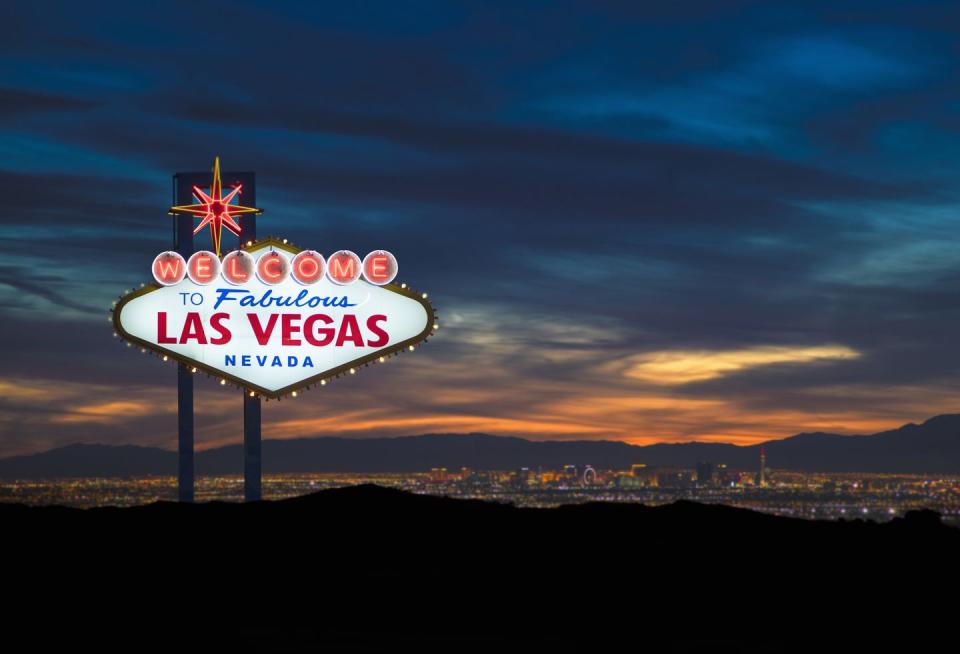
The famous ‘Welcome to Fabulous Las Vegas’ sign is an iconic symbol of the city, but most people don’t know the story of the artist behind it. Erected in 1959 when there were very few female visual artists, Betty Willis created the design while working as an employee for Western Neon, where she also created the signs for Las Vegas hotels The Mint and the Moulin Rouge, America’s first interracial casino. In a town where the skyline has been demolished and revamped numerous times, Willis’s sign has been preserved in its original form and was added to the National Register of Historic Places in 2009. Today, many of Willis’s other memorable signs, including for the Moulin Rouge, can be found at The Neon Museum Las Vegas.
The Shops at Crystals: Daniel Libeskind
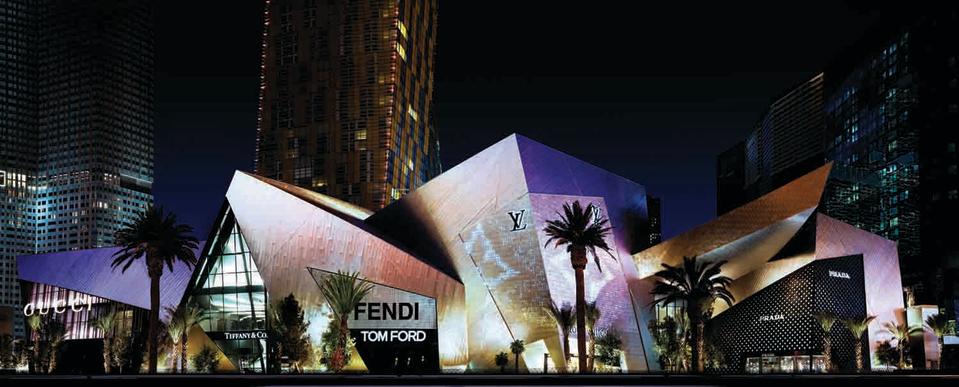
Chances are, you’ve never seen a mall like The Shops at Crystals. Part of the CityCenter complex, the 500,000-square-foot luxury shopping center is a dramatic mix of glass, steel and sharp angles designed by renowned Polish American architect Daniel Libeskind. Also known for his design of the Jewish Museum in Berlin and the master plan reconstruction of the World Trade Center, The Shops at Crystals marked his first project in Las Vegas. From the Strip, pedestrians follow an entryway into the public arcade under a spiraling roof structure, then can make their way to luxury retailers including Louis Vuitton, Balenciaga and Hermes. The building also has LEED Gold Core & Shell certification, making it the world’s largest retail district to achieve such a feat.
The Cosmopolitan of Las Vegas: David Rockwell
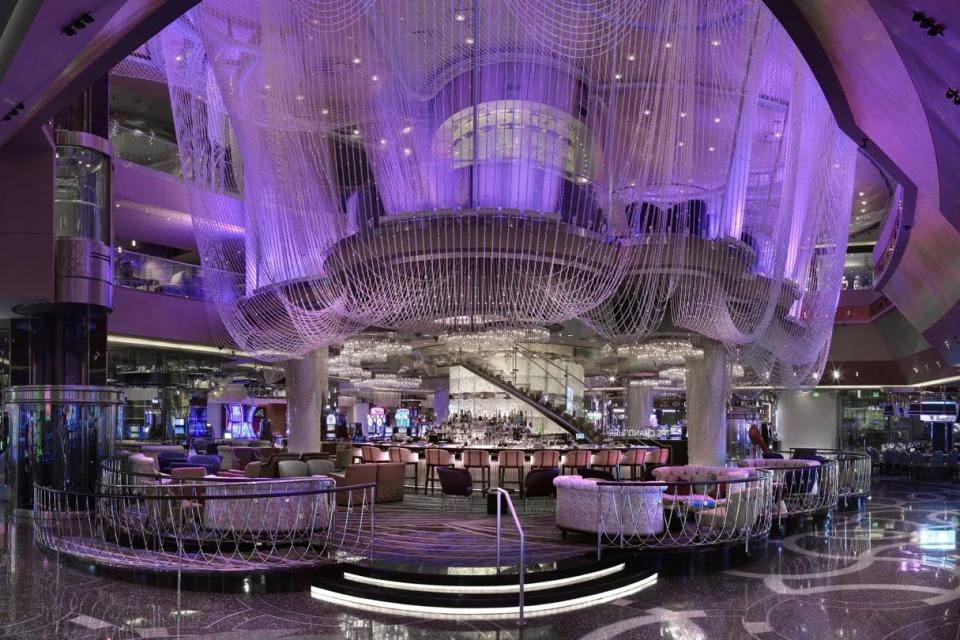
Since opening in 2010, the swanky Cosmopolitan of Las Vegas has made a name for itself as one of the most unforgettable hotels in the city. A team of architects created the final product that is now the Cosmopolitan, including Friedmutter Group who executed the design drawings and Arquitectonica as the principal design firm, but David Rockwell of the Rockwell Group brought much of the eye-popping public areas to life. The team designed the West Lobby, an immersive experience with digital art columns featuring dancers that respond to guest’s movements, and the shimmering, multi-story Chandelier Bar wrapped in 21 miles of crystal beads.
Carbone and Sadelle’s: Ken Fulk
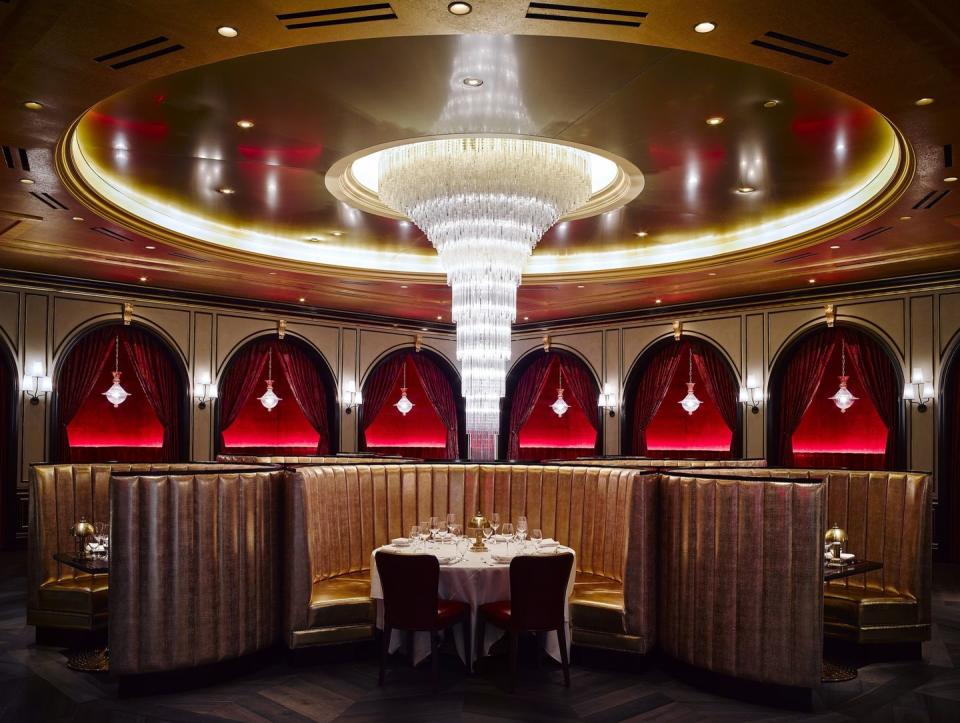
Whimsical designer Ken Fulk brought the New York cool kid aesthetic to Sin City when he collaborated with Major Food Group’s Jeff Zalaznick, Mario Carbone and Rich Torrisi for the 2015 opening of Carbone Las Vegas, with one major difference. While understated elegance is the name of the game in Greenwich Village, the Las Vegas restaurant pulls from the operatic glamour of Vegas in the 1950s. A massive chandelier sourced from a Ferrari dealership hangs in the main dining room, surrounded by intimate red velvet banquettes with dramatic red and gold privacy drapes. It’s a head-turning place to see and be seen.
Fulk’s latest collaboration with MFG is brunch hotspot Sadelle’s Café at the Bellagio. Though it offers American cuisine, the design is decidedly glitzy Parisian bistro, with herringbone wood floors, creamy ocean blue painted walls and coffered ceilings and floor to ceiling windows facing a conservatory.
The Neon Museum Visitors’ Center: Paul Revere Williams
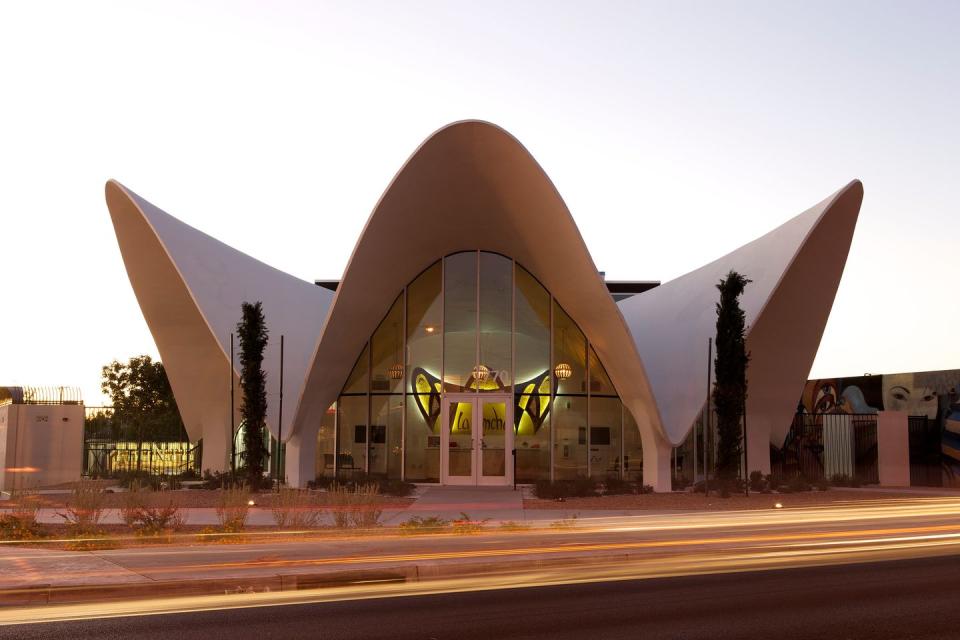
Visitors to the Neon Museum may feel like they’ve stepped into an episode of “The Jetsons” when they arrive at the visitors’ center. The distinctive shell-shaped building, formerly the lobby of the historic La Concha Motel, was designed by acclaimed architect Paul Revere Williams. Originally constructed in 1961 on Las Vegas Boulevard South, the La Concha Motel lobby is an example of mid-century modern design characterized by curvilinear space age shapes. Saved from demolition in 2005, the lobby was moved in 2006 to its current location as the Neon Museum’s Visitors’ Center. As one of the most admired and successful architects of the 20th century, Paul Williams’ notable commissions include the Los Angeles County Stanley Mosk Courthouse, the Beverly Hills Hotel (the hotel sign is in his handwriting) and the Guardian Angel Cathedral also in Las Vegas. As the first documented African American member and fellow of the American Institute of Architects, he was a pioneer in the field of architecture.
Lou Ruvo Center for Brain Health: Frank Gehry
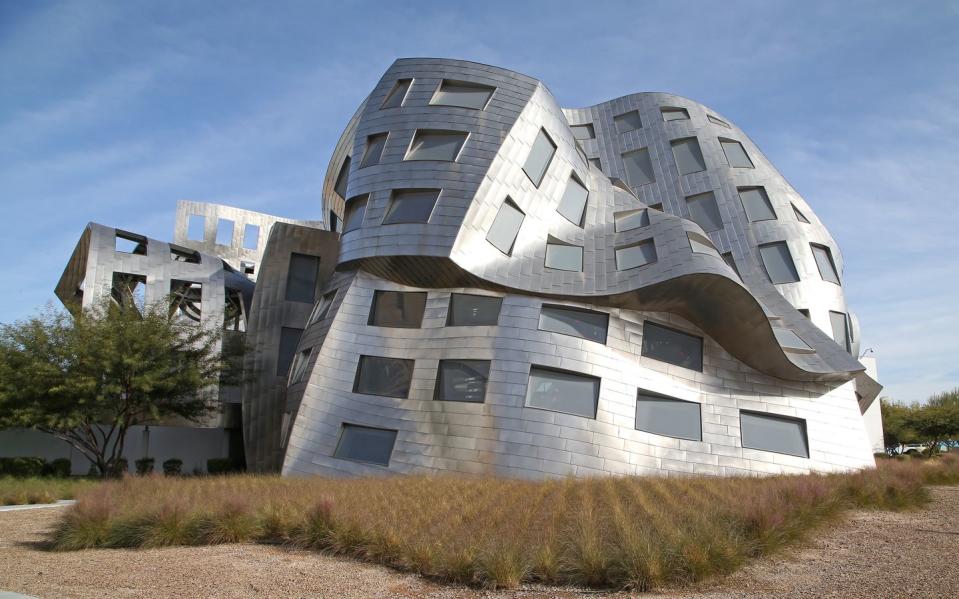

 Yahoo Autos
Yahoo Autos 